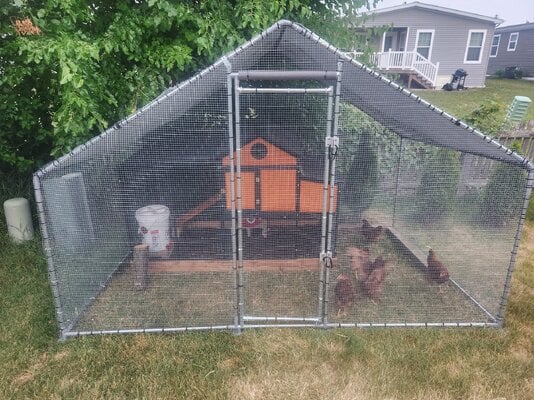Mouthwash
Songster
I live in the suburbs of Chicago and the winters here can be very cold sometimes. I basically have 2 options. 1: winterize this set up (no electricity) or 2: take a section of my shed and let them stay in there (has electric). I have 5 chickens in a sentinal coop from TSC and a 6x10 cage over it for extra walking room while we're home. I thought of covering the entire sentinel coops smaller run in plywood to essentially create a bigger coop, and covering the 6x10 cage with greenhouse plastic, leaving a foot of ventilation at the top.
*Their set up has been improved since this photo with putting the larger cage on 4x4s, mesh underneath and aprons, and 4" of mulch. This picture was taken earlier this year.*
*Their set up has been improved since this photo with putting the larger cage on 4x4s, mesh underneath and aprons, and 4" of mulch. This picture was taken earlier this year.*



